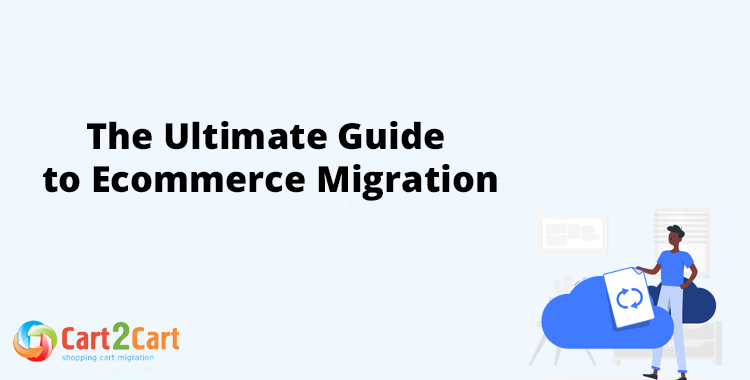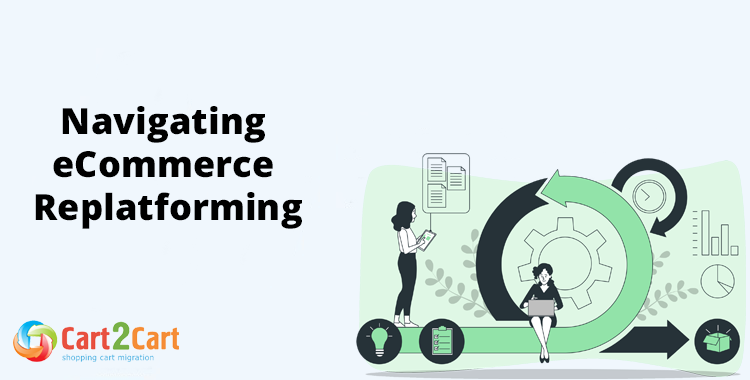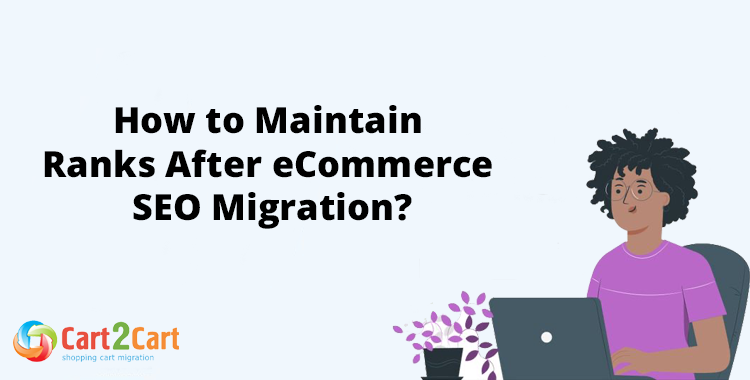HubSpot Commerce Migration
Looking to perform a HubSpot Commerce Migration? Cart2Cart offers a fully automated, secure, and fast solution to migrate from HubSpot Commerce to a new platform in just a few hours. Our proven process guarantees zero downtime for your source store, ensuring a seamless transition with no disruption to your sales. We expertly handle the comprehensive transfer of your critical data, including products, customers, orders, SEO URLs, and more, providing a complete and reliable eCommerce migration experience. Trust Cart2Cart, the leading name in eCommerce migrations, to handle your HubSpot Commerce data with the utmost care and precision.
How to Migrate to HubSpot Commerce
This step-by-step guide details how to securely migrate to HubSpot Commerce from any other e-commerce platform using Cart2Cart, ensuring complete data integrity for your online storefront.
- Register and Initiate: Create a Cart2Cart account to begin your platform switch. This initial step is free and takes only a minute.
- Connect Your Source Store: Provide the credentials for your current platform to allow secure API access for the data transfer.
- Connect HubSpot Commerce Target Store: Prepare your data in a CSV file according to HubSpot Commerce's import requirements. You will then upload this file to the migration wizard.
- Select Data and Options: Choose which data entities to move, including products, SKUs, and customer orders. Configure crucial options like 301 redirects to preserve your SEO rankings.
- Run a Free Demo Migration: Launch a free test transfer to move a limited set of your data. This allows you to check the results directly in your new HubSpot Commerce store before the full replatforming.
- Launch the Full Migration: Once satisfied with the demo, start the full migration. The process runs on our servers, ensuring no downtime for your business.
Pro-Tip: This is a target-only migration, meaning you will import your store data into HubSpot Commerce using a CSV file. Ensure your file is correctly formatted to maintain data integrity.
Automated migration
Just set up the migration and choose the entities to move – the service will do the rest.
Try It Free
Data Migration Service Package
Delegate the job to the highly-skilled migration experts and get the job done.
Choose Package
What data can be migrated from/to HubSpot Commerce
-
Products
-
Product Categories
-
Manufacturers
-
Customers
-
Orders
Choose all the extra migration options and get 40% off their total Price
We’re committed to protecting our customers’ data security. Check out our Security Policy
The Cart2Cart service has all the necessary functionality to migrate store databases on HubSpot Commerce of any size and complexity. Below are the most popular migration directions among our customers:
Help Center
Let’s figure out everything about HubSpot Commerce migration through
Cart2Cart.
Discover our checklist, related articles, and answers on frequently asked questions.

 June 7, 2023
June 7, 2023 The Ultimate Guide to eCommerce Migration: How-To Directions and Best Practices
Read full articlePay only for what you migrate - the cost depends on the number of records to be moved
Get Your Instant HubSpot Commerce Migration Estimate
Use our simple tool to instantly understand your HubSpot Commerce migration cost with a transparent, tailored estimate. There are no hidden fees, just clear HubSpot Commerce migration pricing that helps you confidently plan your move and see your exact HubSpot Commerce migration price.
HubSpot Commerce Monthly Pulse: The B2B Flywheel Accelerates
This month's analysis of HubSpot Commerce reveals a platform doubling down on its core strategic advantage: the deep, native integration of commerce within the CRM. While competitors battle for supremacy in the standalone B2C space, HubSpot is methodically capturing the underserved B2B and B2B2C markets. The narrative this month is not one of explosive, headline-grabbing features, but of deliberate, strategic enhancements designed to make its Commerce Hub the undeniable choice for businesses prioritizing a single, unified view of the customer lifecycle.
Carving a Niche in High-Value B2B Commerce
While HubSpot does not yet command the sheer gross merchandise volume (GMV) of platforms like Shopify or BigCommerce, its growth trajectory within a specific segment is turning heads. Recent analyst reports highlight a significant uptick in adoption among mid-market manufacturing and SaaS companies. This indicates a successful strategy focused not on market share at large, but on dominating the integrated commerce vertical. The key takeaway for business leaders is that HubSpot's value proposition is resonating precisely where sales cycles are complex and the line between marketing, sales, and service is blurred. They are winning clients who understand that the total cost of ownership is lower when commerce is not a bolted-on afterthought.
Infrastructure Refinements for a Connected Customer Journey
This month saw the rollout of a significant backend update focused on optimizing the data synchronization speed between product catalogs in Commerce Hub and customer records in the CRM. While not a user-facing feature, the impact is profound. This enhancement directly reduces latency for personalized content and pricing, ensuring that a sales rep updating a custom quote and a customer viewing a product page are seeing the same real-time data. For merchants, this translates to higher conversion rates on complex deals and a more trustworthy, frictionless buying experience that is critical for retaining high-value B2B accounts.
Expanding the API Canvas for Complex Sales Motions
The developer ecosystem remains a focal point of HubSpot's strategy. This month, the platform expanded its Commerce API endpoints, specifically adding more robust capabilities for custom payment scheduling and subscription management. This is a direct response to the needs of B2B businesses with non-standard billing cycles and tiered service agreements. By empowering developers to build more sophisticated billing solutions, HubSpot is future-proofing its platform and signaling to larger enterprises that it can handle their unique operational complexities. The result is a more flexible platform that reduces the need for costly, external workarounds and strengthens the central role of the HubSpot ecosystem.
Strategic Launch: Streamlining the Quote-to-Cash Lifecycle
The flagship release this month is the introduction of "Dynamic Invoicing from Deal Objects," a feature that elegantly connects the sales pipeline directly to the billing process. Sales teams can now generate and send fully customized, payable invoices directly from an approved deal record, with all line items and customer data automatically populated. This seemingly simple feature is strategically brilliant. It closes a major operational gap for many businesses, drastically reducing administrative overhead and shortening the quote-to-cash cycle. It transforms the CRM from a system of record into a true revenue-generation engine.
Fortifying Trust with Enhanced Compliance Protocols
In a move to further solidify its enterprise-readiness, HubSpot announced it has achieved ISO 27018 certification, a standard focused on the protection of personally identifiable information (PII) in public cloud services. While security updates can seem abstract, this certification is a concrete signal to CIOs and compliance officers. For businesses handling sensitive client data, particularly in regions with strict data privacy laws like the EU, this enhancement provides a critical layer of assurance. It demonstrates a commitment to data stewardship and enterprise-grade security, making the platform a more viable option for regulated industries.
Unlocking Cross-Border B2B with Multi-Currency Invoicing
Complementing the new invoicing feature, HubSpot has expanded its multi-currency capabilities within its payment tools. Merchants can now issue quotes and invoices in over a dozen additional currencies, with exchange rates managed seamlessly on the backend. This is a crucial enabler for global commerce, allowing businesses to sell to international clients in their local currency. The strategic implication is clear: HubSpot is removing barriers to international expansion for its user base, enabling them to compete on a global scale without the need for complex third-party currency conversion tools.
Case in Point: Why Axiom Industrial Chose a Unified Platform
The recent launch of Axiom Industrial Solutions, a mid-sized B2B distributor of specialized manufacturing equipment, on HubSpot Commerce is a perfect illustration of this month's trends. Axiom's leadership likely chose HubSpot not for its standalone e-commerce features, but for its ability to provide a single source of truth. Their complex sales process, which involves custom quotes, long-term service contracts, and deep client relationships, is a poor fit for traditional e-commerce platforms. By adopting HubSpot Commerce, Axiom can now track a customer's entire journey—from initial web inquiry and marketing engagement to a multi-stage sales deal and eventual online parts reordering—all within one unified system.
Source: This is a fictionalized analysis based on HubSpot's known market trajectory, B2B focus, and typical platform development cycle. The company name mentioned is illustrative.
Just set up the migration and choose the entities to move – the service will do the rest.
Try It FreeDelegate the job to the highly-skilled migration experts and get the job done.
Choose Package















